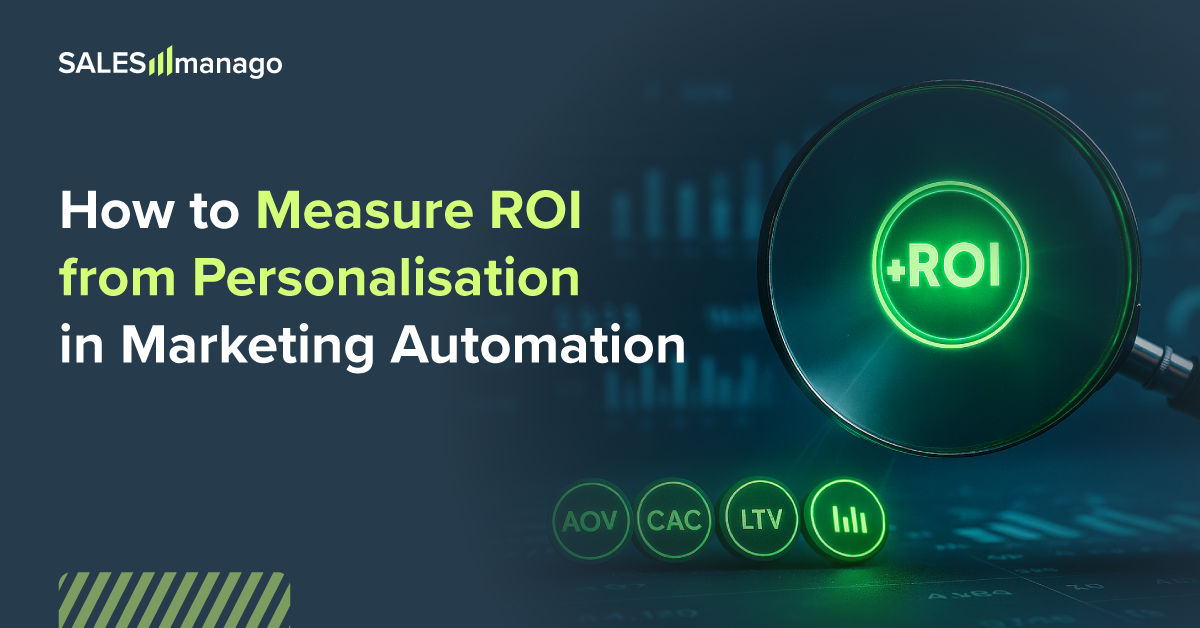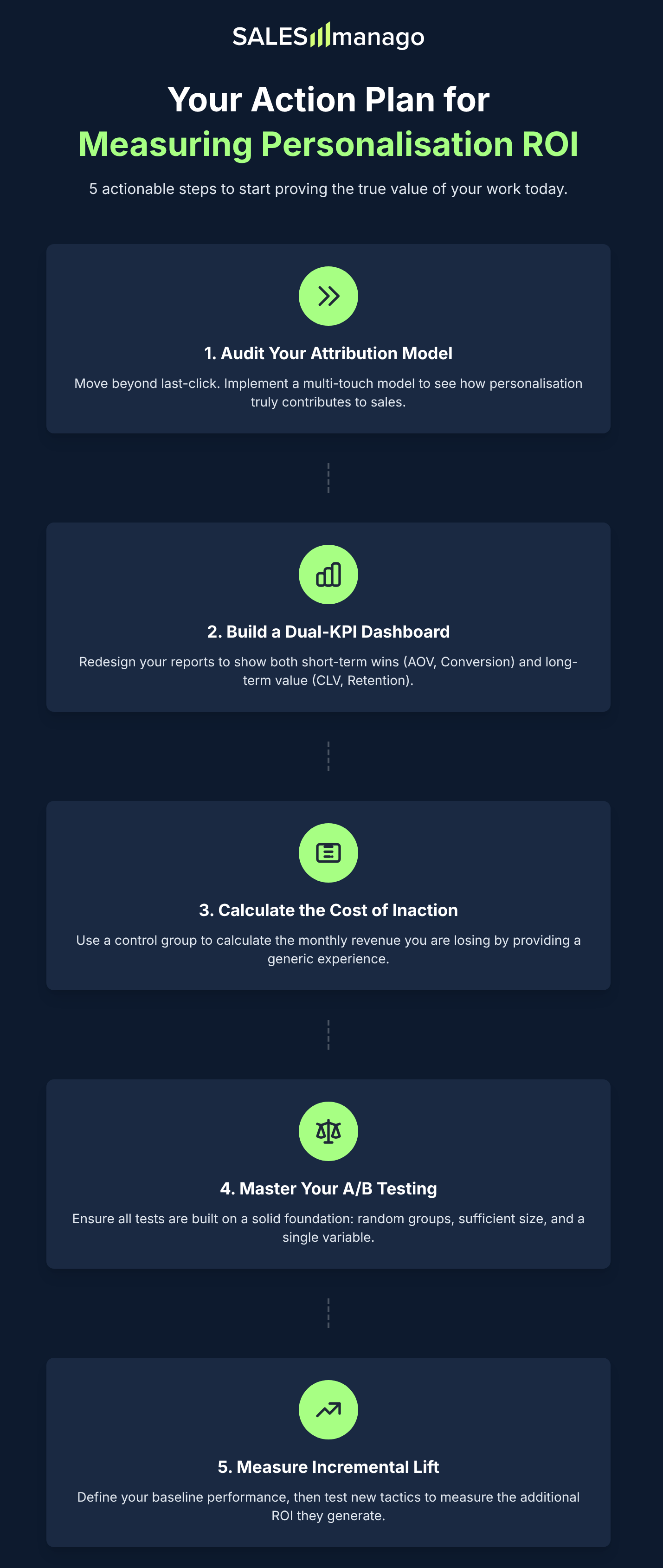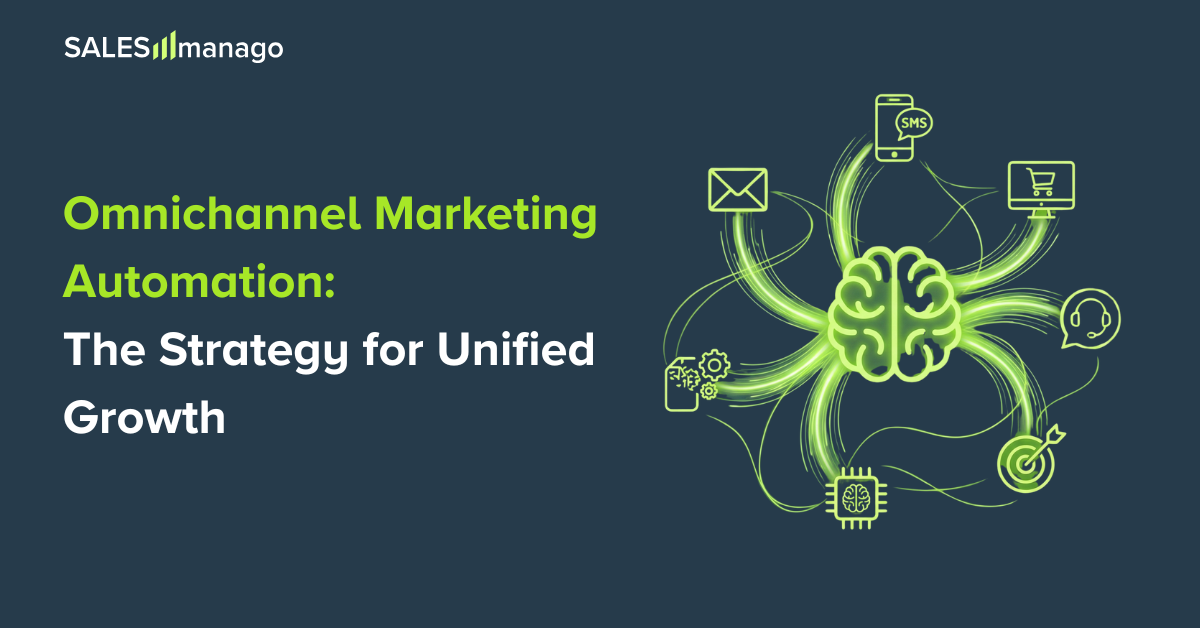
Proving the financial return on personalisation is one of the most sophisticated challenges in modern marketing. While the impact is often felt intuitively—in higher engagement and happier customers—translating that value into hard revenue figures is notoriously difficult.
The problem lies in our measurement models. We are applying simple, campaign-based metrics to a complex, long-term strategy, and the results inevitably fall short. To build a true business case for personalisation, we must first evolve how we measure, moving from surface-level data to a framework that captures its true, cumulative impact.
Moving Beyond Last-Click: Acknowledging the Full Customer Journey
The journey to proving real ROI begins by dismantling the most misleading metric in the digital marketer's toolkit: last-click attribution. Its persistence is understandable; it’s simple, definitive, and was the default for legacy analytics systems. However, in a complex, omnichannel world, attributing 100% of the credit to the final action is a dangerous oversimplification. It inherently ignores the subtle, long-term influence of the personalisation in marketing automation that built the customer's trust and intent in the first place.
This flawed model creates a distorted reality, biasing marketing spend towards bottom-of-the-funnel tactics like branded search while starving the top-of-funnel nurturing that is essential for sustainable growth.
A truly effective measurement strategy must therefore evolve. This means adopting multi-touch attribution models that better reflect reality. A Linear model, for instance, assigns equal credit to every touchpoint, acknowledging that the first blog post a customer read is just as important as the final email they clicked. A Time-Decay model gives more credit to touchpoints closer to the conversion, recognising that recent interactions often have more influence, while still valuing earlier ones. Perhaps most effective is a U-shaped or Position-Based model, which assigns higher credit to the very first touchpoint (for discovery) and the very last (for conversion), while distributing the rest among the nurturing interactions in the middle. Applying these models reveals the hidden value of your mid-funnel personalisation, proving that your automated nurturing sequences are a critical part of the journey, not just background noise. This level of analysis is only possible with a Customer Data Platform capable of unifying these disparate touchpoints into a single narrative.
The Dual-Reporting Strategy: Proving Both Short-Term Wins and Long-Term Value
The challenge of attribution directly creates a time-lag dilemma. The most profound benefits of a great personalisation strategy—increased Customer Lifetime Value (CLV) and deep-seated brand loyalty—do not appear overnight. Yet, the business demands results within a quarterly reporting cycle. The most effective way to manage this tension is with a dual-reporting strategy that tells two stories at once, framed as a "Performance & Potential" dashboard. This approach satisfies the need for immediate accountability while educating the business on the long-term nature of strategic marketing.
The "Performance" side of your dashboard focuses on immediate, tactical eCommerce KPIs. This is your in-quarter evidence. It includes metrics like the direct revenue recovered from your abandoned cart flow, the conversion rate lift from an A/B tested personalised banner, or the specific increase in Average Order Value (AOV) from your AI recommendations engine.
For example: "This quarter, our new AI recommendation engine drove a £8.50 increase in AOV for customers who interacted with it, generating an immediate £15,000 in additional revenue." This aligns with industry findings, as McKinsey reports that effective personalisation can lift revenues by 5-15% and increase marketing spend efficiency by 10-30%.
The "Potential" side of the dashboard builds the bridge from these short-term wins to long-term value. Here, you use the slower-moving but far more powerful data on CLV and customer retention to tell the strategic story. You can demonstrate how the tactical wins directly fuel these metrics: the higher AOV contributes to a higher overall CLV, and the improved conversion rate from your personalised welcome series directly impacts your customer retention rate. This allows you to project future revenue based on observed loyalty trends, providing a forecast of the long-term, compounding value of your work.
A Strategic Reframe: Measuring the High Cost of Inaction
As a marketer, you are constantly asked to justify the cost of new initiatives. The most mature approach to measuring marketing ROI, however, involves a powerful reframe. Instead of only justifying the cost of your actions, you must also highlight the immense business risk and opportunity cost of inaction (COI). The more strategic question is not "What is this costing us?", but "What is not doing this costing us?". Every generic email and irrelevant offer contributes to "customer experience debt"—a build-up of minor frustrations that leads to churn.
To quantify this, you must treat your generic, non-personalised experience as a distinct campaign to be measured. First, isolate a control group of users who receive no advanced personalisation. Then, track their conversion rate against a segment that does. The gap between these two groups reveals the direct revenue being lost. For example, imagine your site has 100,000 monthly users and an average order value of £200. If your personalised segment converts at 2.0% while the generic control group converts at only 1.5%, the cost of inaction becomes clear. That 0.5 percentage point difference isn't just a small number; it represents a tangible loss of revenue. You can calculate this with a simple formula:
(Monthly Users AOV) (Personalised Conversion Rate - Generic Conversion Rate) = Monthly Revenue Lost to Inaction.
In this scenario, that equates to £100,000 in lost revenue every single month. By presenting this data, you change the entire conversation. Personalisation is no longer a marketing expense to be scrutinised, but a critical investment required to mitigate risk and capture otherwise lost revenue.
The Key to Reliable Data: The Control and Test Groups
For any ROI measurement to be credible, it must be based on the fundamental principle of A/B testing: comparing a test group against a control group. Without this, any change in your metrics is merely a correlation, not proof of causation. You won't know if the uplift in conversion was the result of your new personalisation, or simply due to a seasonal sale.
How to Properly Create and Manage These Groups:
Random and representative: Groups must be created randomly to avoid any bias. The control group needs to be statistically similar to the test group in terms of demographics, purchase history, and behaviour. Modern platforms automate this process, ensuring you are comparing like with like.
Sufficient size: Testing on a group that is too small will not yield statistically significant results. The group size must be large enough for even a small change in conversion to be measurable and reliable. As a rule of thumb, the smaller the improvement you expect, the larger the sample size you will need.
Isolation and a single variable: The control group must be completely isolated from the new tactic you are testing. Crucially, you should only change one significant element in any given test. If you simultaneously test a new offer and a new communication channel (e.g., SMS), you will be unable to determine which factor drove the change.
Properly managing these groups is the foundation that allows you to move from assumptions to hard data. It is this data, derived from rigorously conducted tests, that forms the bedrock for reliably measuring the return on investment from innovation.
The Final Step: Isolating the ROI of True Innovation
Finally, a sophisticated understanding of ROI requires differentiating between foundational and incremental value. In today's eCommerce landscape, a basic abandoned cart email is not an innovation; it is the cost of entry, a foundational activity. Lumping the results from this baseline activity in with a new, advanced AI-powered initiative makes it impossible to prove the value of continued innovation. The solution is to measure in layers.
First, establish the baseline performance of your foundational activities (welcome series, birthday emails, etc.). Then, use rigorous A/B testing with statistical significance to isolate and measure the specific, incremental lift provided by new tactics. This allows you to clearly articulate the value of pushing boundaries, for instance: "Adding SMS to our existing abandoned cart flow generated an additional 2.5% recovery rate over our email-only baseline, proving the incremental value of this new channel and justifying further investment in omnichannel communication."
Conclusion
Ultimately, measuring the ROI of personalisation is less about finding a single, perfect formula and more about adopting a strategic philosophy. While the calculations for AOV lift or CLV projection are important, the real skill lies in weaving these data points into a compelling business narrative. It requires the ability to tell a nuanced story that balances short-term proof with long-term value, presenting immediate tactical wins as the fuel for sustainable, strategic growth. This approach frames investment not just as a driver of gain, but as a crucial mitigator of risk—a defence against the very real cost of customer churn and market share erosion that comes from being generic in a personalised world. It is a fundamental move away from the language of counting clicks and towards the language of communicating customer value, business resilience, and predictable, long-term revenue.
Visual Summary

Latest posts

9 Ways to Win Christmas Sales Without Becoming The eCommerce Grinch
There is something special in the air during December. It is a mix of festive anticipation and the low-level hum of anxiety. You wish for Christmas to arrive already and, at the same time, you know how much you need to do before the bliss of blanket laziness. But first - presents! The stakes are high: you are not buying objects, you express love. And you don’t have m...

6 Trends Shaping the Future of eCommerce in 2026
Every few years, eCommerce shifts in a way that forces leaders to rethink almost everything they have known so far. And 2026 feels like one of those years. We are now facing an unprecedented change caused by spreading AI solutions across all industries and markets. Every year, AI becomes more and m...

Omnichannel Marketing Automation: The Strategy for Unified Growth
The modern eCommerce marketer is caught in a difficult paradox. You are expected to deliver a seamless, relevant experience for every single customer—true 1-to-1 personalisation—yet you are often armed with a fragmented stack of tools that treat your customers like rows in a spreadsheet.
